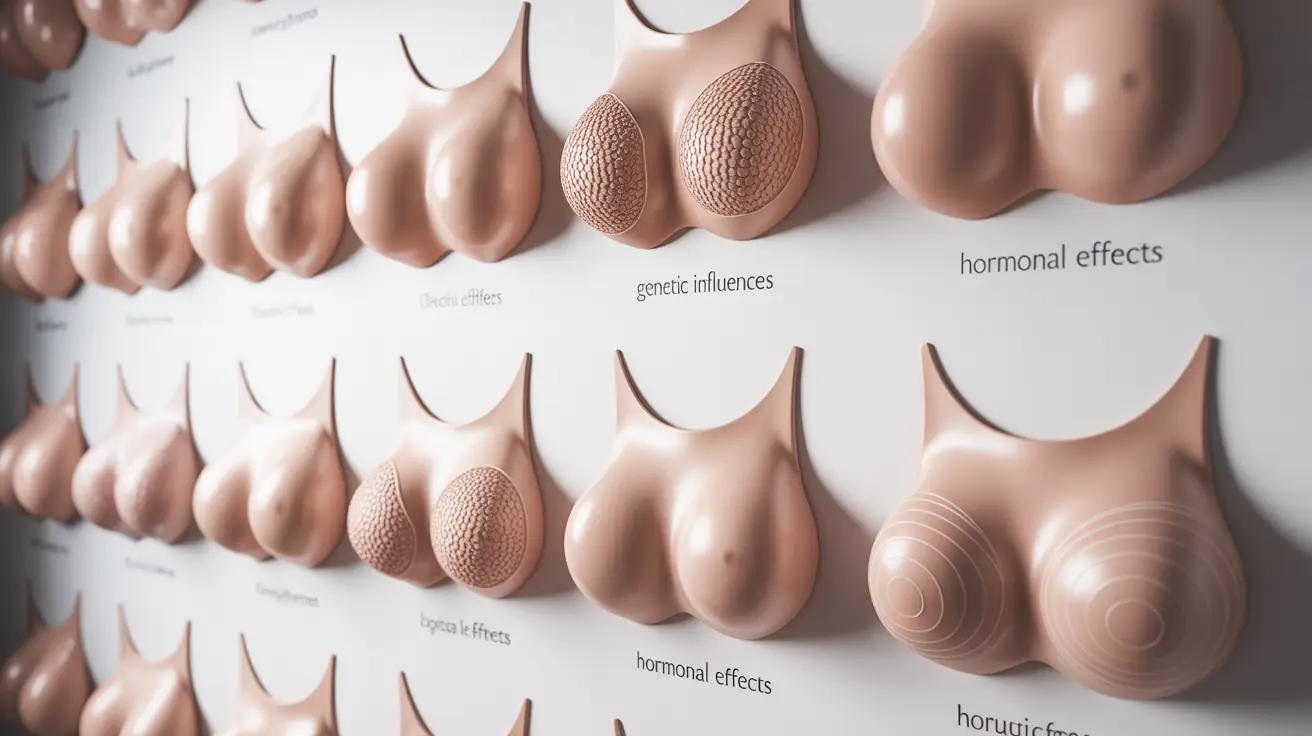Breast size and shape are topics of significant interest, reflecting the diversity of human bodies and the many factors that influence their development. Understanding what's typical, what causes variation, and how breasts change over time can help people better understand their bodies and make informed health decisions.
This comprehensive guide explores the various aspects of breast size, from genetic influences to lifestyle factors, providing evidence-based information to answer common questions and concerns.
Understanding Average Breast Sizes Worldwide
Breast size varies significantly across different populations and regions. In the United States, the average bra size has increased over recent decades, with current estimates suggesting a range between 34DD to 36DD. However, these statistics can be misleading due to inconsistent sizing standards and the high percentage of women wearing incorrectly sized bras.
Global variations show interesting patterns, with studies indicating different averages across continents and ethnic groups. These differences reflect both genetic diversity and environmental factors that influence breast development.
Genetic Factors and Natural Variation
Genetics plays a primary role in determining breast size and shape. Multiple genes influence breast development, affecting factors such as:
- Tissue composition
- Fat distribution
- Hormonal sensitivity
- Overall body structure
This genetic blueprint interacts with hormonal and environmental factors throughout life, contributing to individual variations in breast development and appearance.
Environmental and Lifestyle Influences
Diet and Exercise
While no specific diet can target breast size directly, overall body weight affects breast composition since breasts contain significant fatty tissue. Exercise, particularly chest-strengthening exercises, can improve muscle tone beneath the breasts but doesn't directly alter breast size.
Hormonal Factors
Hormonal fluctuations throughout life significantly impact breast size and shape:
- Puberty and adolescent development
- Menstrual cycle changes
- Pregnancy and lactation
- Menopause and aging
Modern Trends in Breast Augmentation
Breast augmentation has become increasingly common worldwide, with varying preferences for implant sizes across different regions. In the United States, moderate sizes that create natural-looking results are often preferred, while preferences may differ in other countries.
Important considerations for those contemplating breast augmentation include:
- Safety and FDA approval
- Recovery time
- Long-term maintenance
- Potential complications
- Cost factors
Natural Changes Throughout Life
Breasts naturally change throughout different life stages, affected by:
- Age-related tissue changes
- Weight fluctuations
- Pregnancy and breastfeeding
- Hormonal shifts
- Environmental factors
Frequently Asked Questions
What is the average breast size in the United States, and how does it compare globally?
The average breast size in the United States typically ranges from 34DD to 36DD, which is larger than many other countries. European averages tend to be slightly smaller, while Asian countries generally report smaller average sizes, demonstrating significant regional variation.
How does genetics influence breast size, and what other factors contribute to variations in breast shape?
Genetics determines approximately 50-80% of breast size and shape characteristics. Other contributing factors include hormonal levels, body mass index, overall health, and environmental influences during development.
Can changes in diet or exercise affect breast size, and if so, how?
Diet and exercise primarily affect breast size through changes in overall body fat percentage. While specific exercises can't target breast tissue directly, chest exercises can improve underlying muscle tone and posture, which may affect how breasts appear.
Are breast implants common, and what are the typical sizes used in different regions?
Breast augmentation is among the most common cosmetic surgical procedures worldwide. In the US, moderate sizes (300-400cc) are most popular, while preferences vary by region. South American countries often favor larger implants, while Asian countries typically prefer smaller, more subtle enhancements.
How do hormonal changes, such as those during pregnancy or menopause, impact breast size and shape?
Hormonal changes significantly affect breast size and shape. During pregnancy, breasts typically increase in size due to increased progesterone and estrogen. During menopause, reduced hormone levels often lead to changes in breast tissue composition and size, typically resulting in less firmness and volume.




